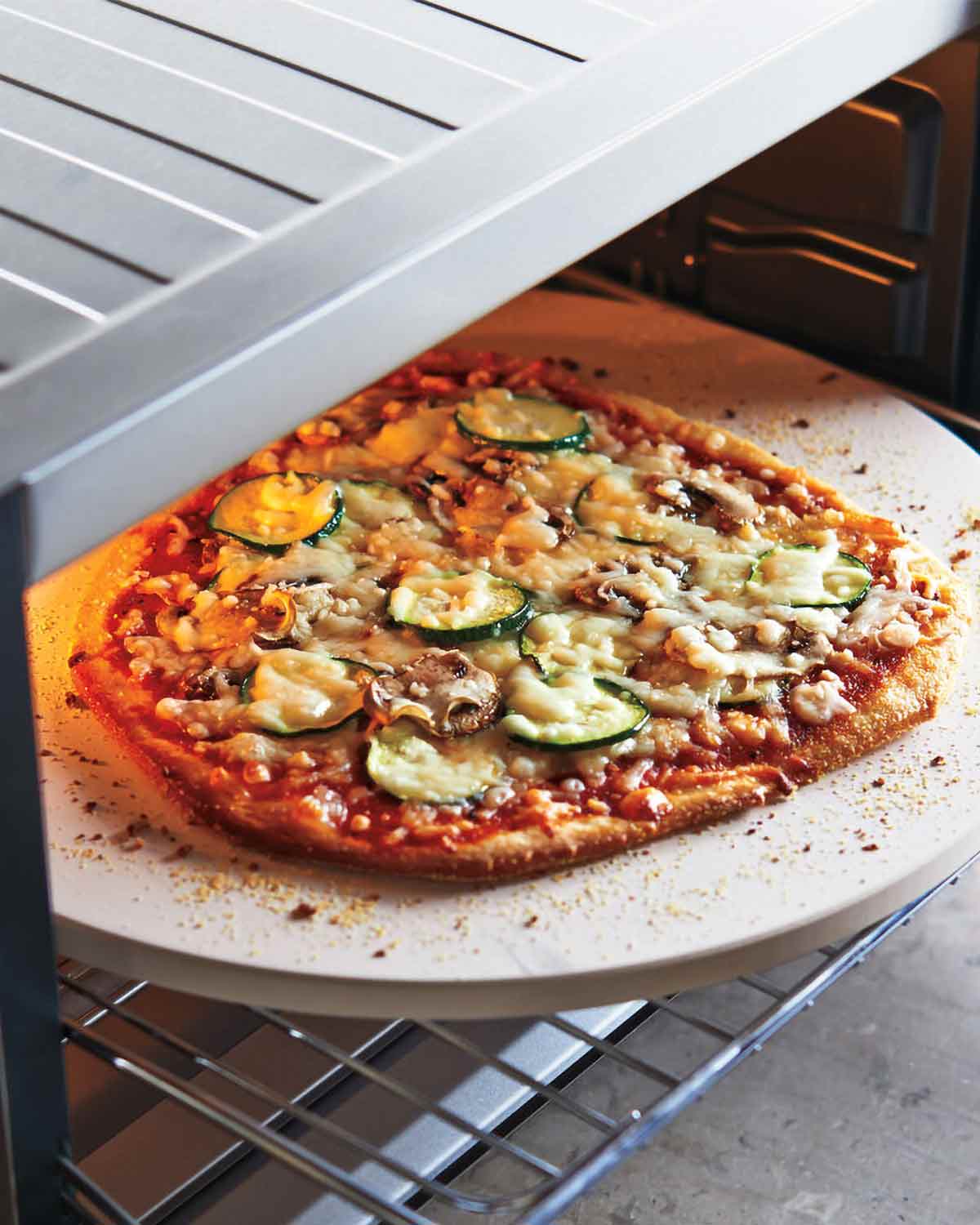About Jack Van Amburg
Food has always been a central part of Jack’s life, back to the days of standing on a stool in the kitchen so he could keep an eye on his toaster waffles. When he wasn’t learning from his mother and grandmothers, he was watching Food Network and reading back issues of Gourmet and Saveur. A classically trained cellist, Jack started working in kitchen stores during grad school for fun and loved getting to try out all the new cooking products and running cooking demonstrations. You can find him and his most recent cookbook obsession at @whatsjackmaking.



Hi, my name is Chris and enjoy your emails and all the recipes and tips that help my cooking. I saw the article about the white ceramic pizza stone, which I have. I found that my crust comes out like concrete and not soft. Any tips to help avoid this for future Baking?
Welcome, Chris! There could be several contributing factors here beyond just the pizza stone. Are you heating your oven as high as it will go with the stone inside? You want that stone as hot as possible so that the pizza will cook quickly. The longer you have to cook it on the stone, the harder it will get. Also, you want to make sure your dough isn’t too dry and that you’re not overworking it, which can result in a hard dry crust.
Well done Jack! I have an Emile Henry pizza stone that I love. Nice to see the other options. Very well put together article.
Thanks Terry! I’ve been in love with the Emile Henry pizza stone (and all their products) since my Sur La Table days, back before Modernist Cuisine championed the pizza steel in 2013. Have you tried using yours on the grill yet, both for pizza and as a grill surface? I’m curious to see how it performed for you…from years of apartment living I’ve only had opportunity to use mine in the oven.
I have a thick cordierite one I’ve probably had for a decade. It lives in my oven. For exactly the property to retain oven heat you describe. This means I have to spend extra time preheating my oven before I bake anything but, once heated, I’m able to open the door to check on things without big temperature fluctuations.
When I’m using biscuits as a crust for something I bake them directly on the stone for a few minutes to get a cooked bottom before I place them on the food they’ll bake on. And, of course, it’s excellent for free formed bread as well as pizza.
I’ve never cleaned mine more than to scrape it with my bench knife. It’s stained but who cares!
That’s fantastic, Rainey. Great suggestion to use it for maintaining heat in your oven.
Mine is pretty stained, too, and I’m ok with that.
Rainey, glad to know you keep yours in your oven 24/7/365 and have great results. They can be so heavy that moving them is a workout in and of itself! Fully support embracing the “patina”…a stained baking stone is usually the sign of a happy, prolific, and well-fed baker!